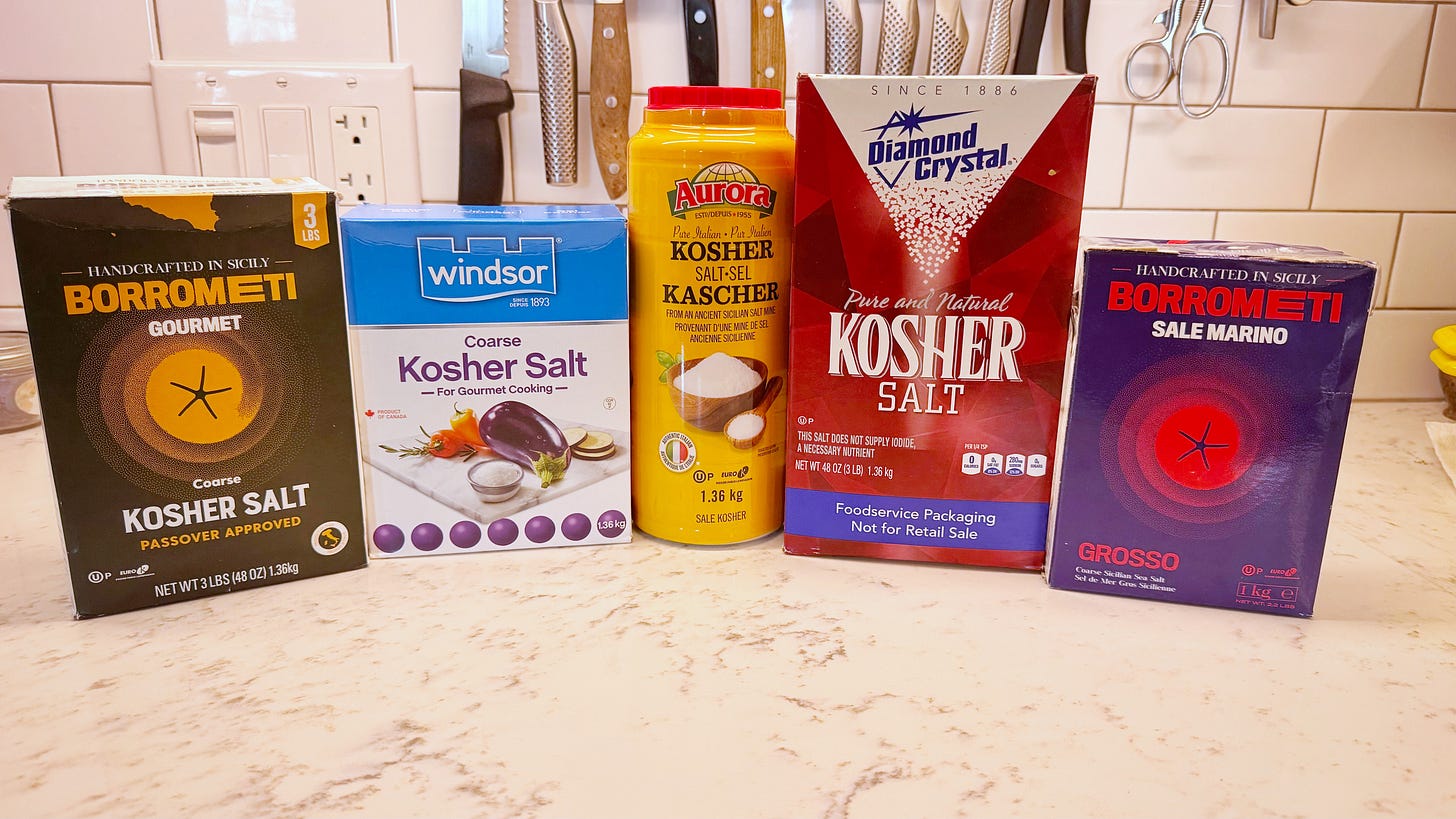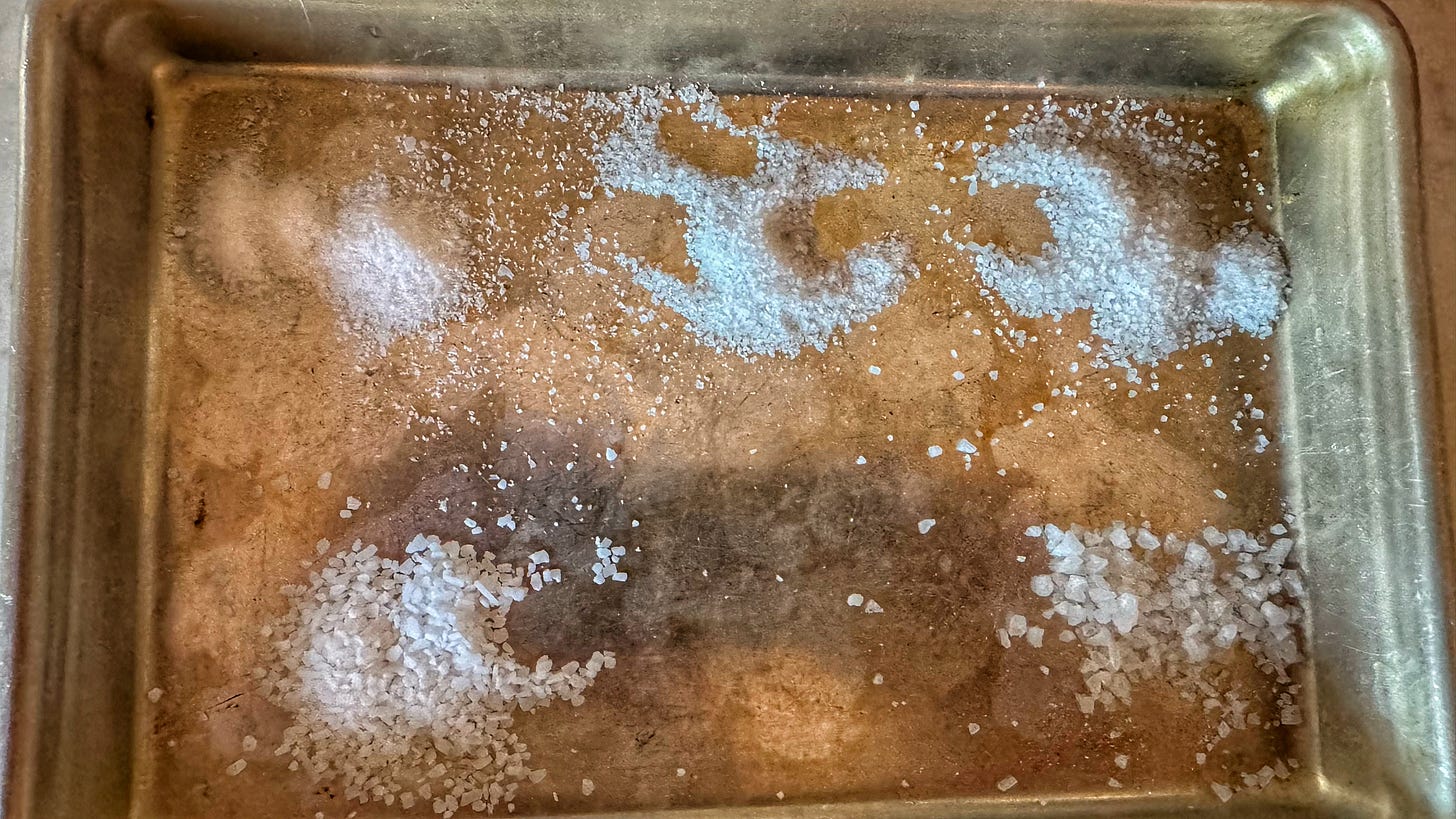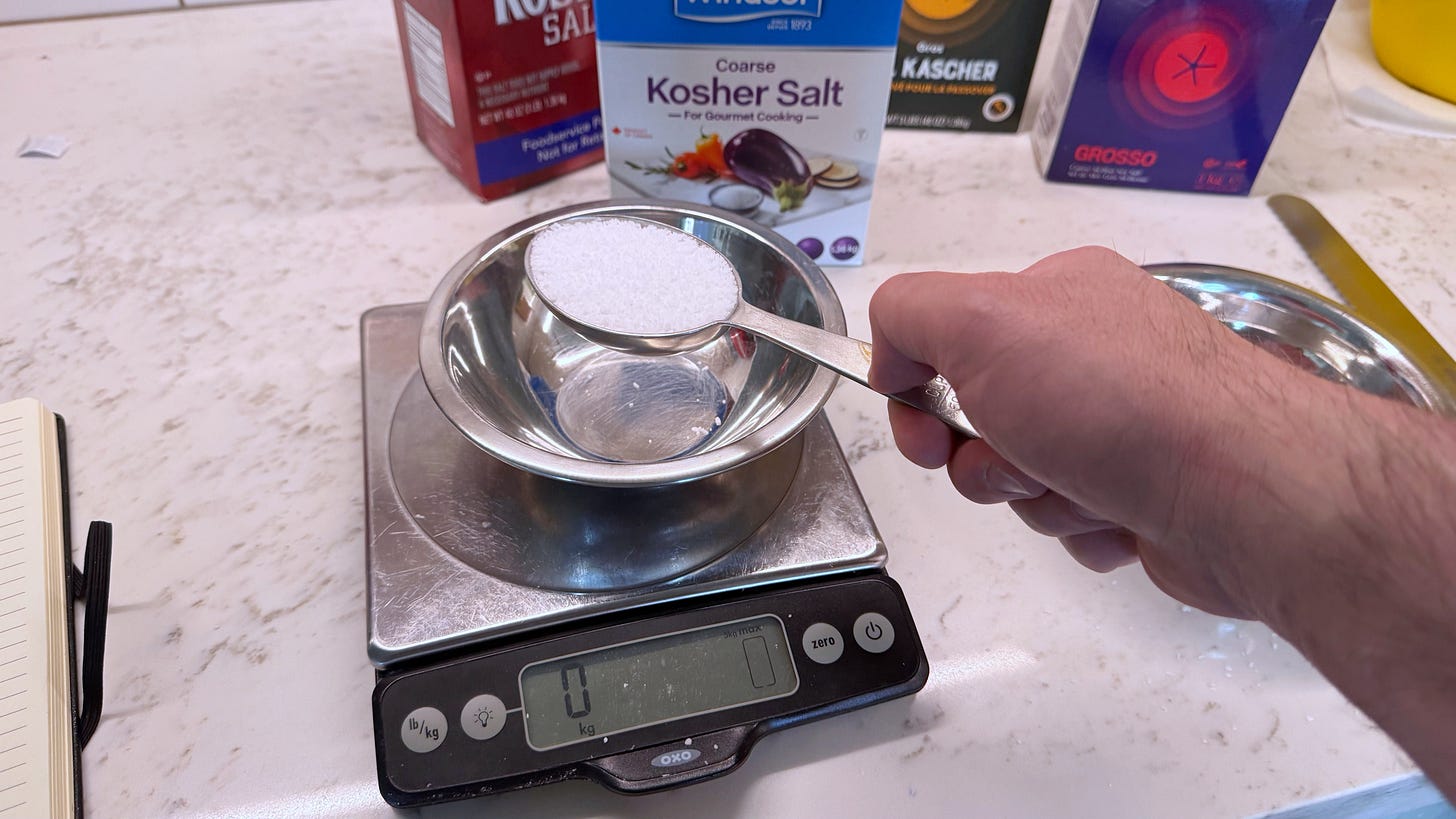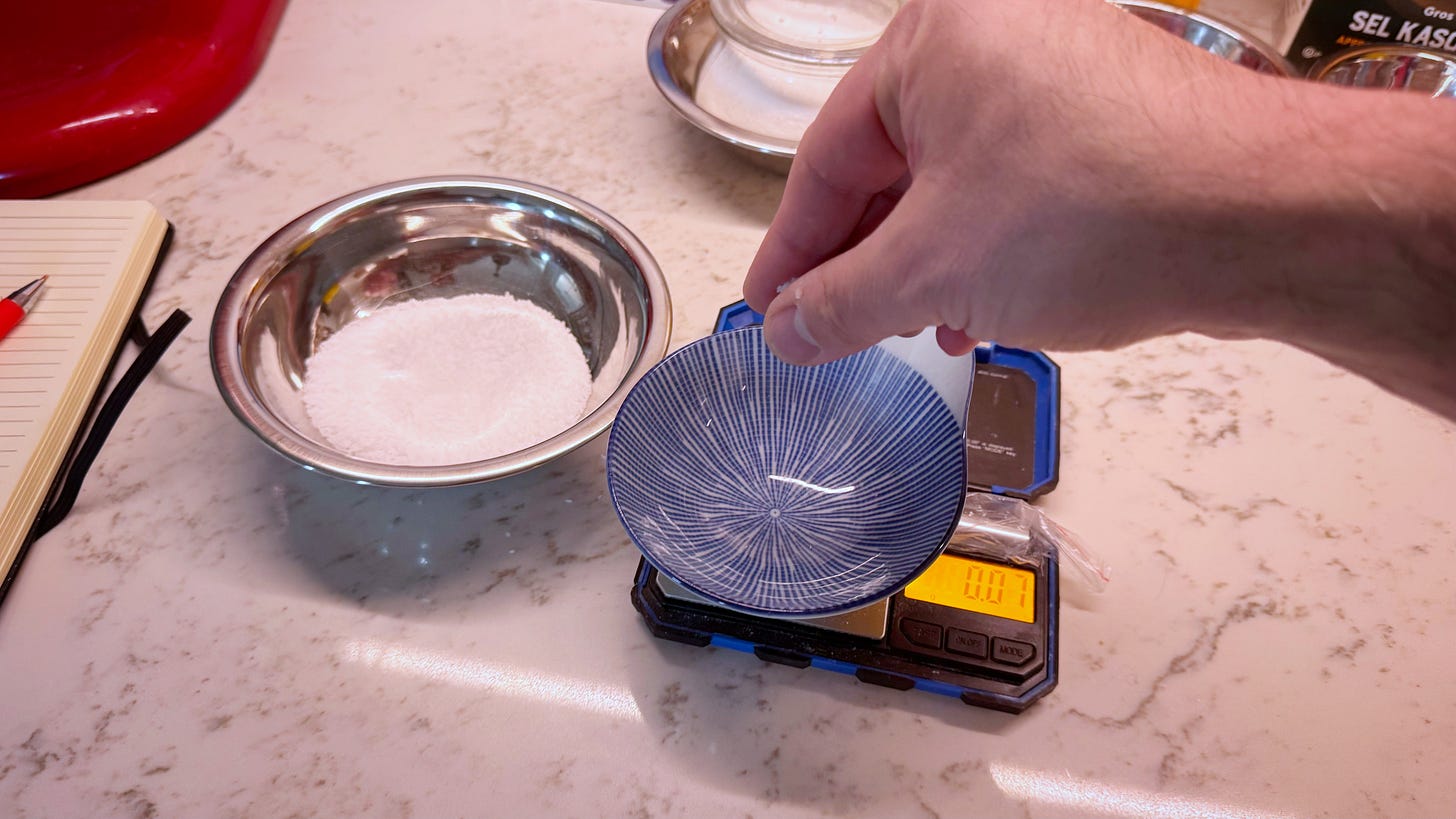61. Getting Salty on Trade
What to do when your kosher is no longer kosher
Like many other Canadians, the trade war has caused me to become more deliberate with my purchasing decisions, trying to spend in a way that as much of my money as possible stays in Canada. Or at the very least, heads to a country that isn’t suddenly hell-bent on destroying us. As many of you will no doubt have discovered, it’s not always as easy as just choosing something else. With production integrated across borders and multinationals having Canadian subsidiaries that create jobs in Canada, there’s no easy purity test.
Take, for instance, Windsor Salt. It was founded in Windsor (duh) in 1893 but bought by Morton Salt, based in Chicago, in 1954. In 2009, Morton was acquired by a German fertilizer and salt company, K+S. And, in 2020, K+S sold Morton and Windsor to the Kissner Group,1 which is owned by Stone Canyon Industries Holdings from Los Angeles. (Windsor’s head office is now in Pointe-Claire, Quebec, because of course.) The salt is Canadian, but is the salt company? Is it Canadian enough?
I mention Windsor Salt because one of the products I’m trying to find a replacement for is kosher salt,2 although not Windsor’s version. (More on that later.) I’m trying to find a replacement for Diamond Crystal Kosher Salt, which is owned by Cargill,3 based in Minnetonka, Minnesota. “Trying to find” is the operative phrase, because Diamond Crystal is, in the world of salt, sui generis.
To understand why, let’s talk about salt in general. In comparing different kinds of salt—like table salt, sea salt, flaky salt, kosher salt, or fleur de sel—people often say that some are saltier than others. This is not true, but also true. All salt, of course, is sodium chloride, along with, in some cases, other minerals or additives. (More on that later too.) So 5 grams of any salt will be just as salty as 5 grams of any other salt, just as any one molecule of NaCl will be as salty as any other molecule. Let’s call this True Saltiness.
What makes different salts saltier or less salty than others isn’t their chemistry; it’s their geometry. Diamond Crystal salt is made using the patented Alberger process, which creates hollow, ziggurat-like diamond- or pyramid-shaped crystals with lots of facets. The process for making Windsor Kosher Salt (and Morton as well, since they’re essentially the same salt in different packages) yields solid flakes of salt. This means that a tablespoon of solid flakes of Windsor/Morton Kosher Salt will contain a lot more salt than a tablespoon of hollow Diamond Crystal, which will contain a lot more air. When measured by volume, a tablespoon of Windsor/Morton is about twice as salty as a tablespoon of Diamond Crystal because there are literally twice as many NaCl atoms in the spoon. Let’s call this Perceived Saltiness.
This hollow structure has given Diamond Crystal some properties that have caused chefs like Samin Nosrat to swear by it.
It dissolves more quickly than other, solid salts. This means you that when you add salt to whatever you’re cooking, you get an accurate sense of whether you’ve seasoned correctly sooner. With a salt that dissolves more slowly, it’s possible to add the perfect amount of salt to your dish, taste it before all the salt has dissolved, think that it needs more seasoning, and add more (i.e., too much) salt again.
The many facets on the crystals make it very adherent. When you sprinkle Diamond Crystal on your food, it doesn’t bounce off.
Because, by volume, it’s less salty, it gives cooks a wider margin of error when adjusting seasoning. It’s a lot harder to add too much salt when each pinch or tablespoon is less salty.
Another difference between Diamond Crystal and Windsor/Morton is what’s in them. Diamond Crystal is pure salt with no additives. Windsor/Morton contains salt with yellow prussiate of soda, an anti-caking agent, added.4 If you look not very hard online, you will discover some pearl-clutching about yellow prussiate of soda’s chemical name, sodium ferrocyanide, which seems terrifying but really isn’t. I’m not afraid of anti-caking agents; I’d just prefer my salt be all salt.5
With all of that in mind, my criteria for finding a salt to replace Diamond Crystal are these:
Canadian
Failing that, Canadian-friendly
Additive free6
As close to Diamond Crystal’s Perceived Saltiness as possible
Similar hand-feel to Diamond Crystal. After 15+ years of using Diamond Crystal, I know how much I’m picking up when I reach into my salt container and drop it into what I’m cooking.
Criteria established, I headed out to several supermarkets, warehouse stores, and restaurant supply cash-and-carries to see what I could find.

Here are the contenders:
Borrometi Gourmet Coarse Kosher Salt
Product origin: Italy
Company HQ: Italy
Ingredients: Natural Sicilian rock salt, Magnesium carbonate (an anti-caking agent)
Size: 1.36kg
Cost: $5.79 ($0.43/100g)
Aurora Pure Italian Kosher Salt
Product origin: Italy
Company HQ: Canada
Ingredients: Rock salt
Size: 1.36kg
Cost: $5.99 ($0.44/100g)
Windsor Coarse Kosher Salt
Product origin: Canada
Company HQ: Canada
Ingredients: Salt, Yellow prussiate of soda (an anti-caking agent)
Size: 1.36kg
Cost: $6.99 ($0.51/100g)
Borrometi Coarse Sea Salt (Not a kosher salt, but it was so much cheaper that I dearly hoped it would be of similar coarseness)7
Product origin: Italy
Company HQ: Italy
Ingredients: Natural Sicilian Mediterranean sea salt
Size: 1kg
Cost: $1.99 ($0.19/100 g)
And for comparison, Diamond Crystal Kosher Salt
Product origin: USA
Company HQ: USA
Ingredients: Salt
Size: 1.36kg
Cost: $12.99 ($0.96/100g) (Although I have seen it in stores priced as high as $21.99, or $1.62/100g!)
Before even opening the boxes, it was already clear that no salt was going to be perfect. They all failed to meet at least one of my criteria. But, happily, they were all around half the price of Diamond Crystal. And packed in boxes that took up much less space that the big red box.8
I poured a small pile of each salt onto a sheet tray and compared how they felt on my fingertips.
First, I felt the Diamond Crystal to establish a benchmark. It felt almost soft and powdery, but still easy to pinch. Aurora was very slightly more coarse. Borrometi Kosher was even coarser. Borrometi Coarse Sea was unacceptably chunky and more suited for pickling or brining.910 Windsor was less coarse than that, but easily the coarsest and hardest of the kosher salts.
Next I measured the Perceived Saltiness of each candidate by filling a 1/4 cup measure, levelling it off with a straight edge, and weighing the result. I did this twice for each salt and averaged the results to account for slight variations.
Diamond Crystal was the same each time: 35g. Here’s how the others weighed in:
Windsor: 57g.
Aurora: 57.5g
Borrometi Kosher: 58.5
Borrometi Coarse: 59.5.
In all cases, the candidates had significantly higher Perceived Saltiness than Diamond Crystal—definitely something to keep in mind when switching over.
But perhaps even more important than how much fits into a measuring spoon is who much fits between my fingers, as they are the primary way I add salt when cooking. To test this, I took my usual thumb-and two fingers pinch of salt and weighed it, then repeated it three more times to see how consistent my pinches were.
Once again, Diamond Crystal was very consistent, with only a spread of 0.11g between my largest and smallest pinch, averaging 0.77g per pinch. Here are how the candidates fared:
Windsor: 1.21g average / 0.57g spread
Aurora: 0.88g average / 0.25g spread
Borrometi Kosher: 0.94g average / 0.29g spread
Borrometi Coarse: 1.68g average / 0.62g spread
Once again, Aurora was looking like it was in the lead, aside from having a Perceived Saltiness that is 60% higher than Diamond Crystal. It was the closest in all other measures. The Borrometi Coarse’s grains varied greatly in size, making it very difficult to pick up a consistent amount each time. For this reason and its previous results, I eliminated it at this point.
The final test I performed was to check how quickly each salt dissolved. I measured 200g of water straight from the cold tap (warmer water speeds up dilution) and measured 5g of each salt, which would create a 2.5% brine, which is about the upper limit for how salty you want a sauerkraut brine to be.
At first I timed how long it would take for me to stir each mixture until all the crystals were dissolved, but I quickly realized that I could game the results subconsciously by stirring faster or slower. I also saw that it was difficult to know exactly when the crystals had all dissolved. To account for both of these concerns, I switched from stirring to using my handy, one-speed milk frother and stopped to inspect for remaining crystals every five seconds. Here are the results:
Diamond Crystal: 15 seconds
Windsor: 20 seconds
Aurora: 20 seconds
Borrometi Kosher: 20 seconds
Borrometi Coarse (I know I said I eliminated it, but I was morbidly curious): 60 seconds!
No huge differences here. It was impossible to know if any salt’s crystals had dissolved at the 16th second or just before the 20th. Trying shorter blending intervals seemed impractical and stopping more frequently to check, which took varying amounts of time, seemed likely to introduce more noise than signal to the data. I called it a draw.
A draw in the last test, but a clear winner overall: Aurora Pure Italian Kosher Salt. In terms of provenance, it’s not perfect because the salt is Italian not Canadian, but at least it’s imported by a Canadian company. To the touch, it feels the most like Diamond Crystal and pinches the closest as well. Its Perceived Saltiness is something I will need to remind myself of constantly, as well as its slower dilution time. But it is additive-free, which I’m very glad of.
Even before starting this experiment, I had suspected that among my contenders Aurora would come the closest to what I was after. And, as far as I know, Aurora has never been accused of aiding and abetting slave labour in Cote d’Ivoire, like Diamond Crystal’s parent company. But I won’t switch over to Aurora for a while. I still have about an eighth of a box of Diamond Crystal left and, as a result of these tests, about four kilograms of Aurora, Windsor, and Borrometi to work through before I need any kosher salt again. It’s entirely possible that the trade war and the administration that brought it about will be gone by then.11 But, as with so many other choices Canadians have made recently, I almost certainly won’t be back. Elbows up!
What’s Consuming Me…
Another episode of The Plate Cleaner on Video, for one. I described this on Instagram (Why aren’t you following me on Instagram?) as “A recipe, a cash grab, and a video that won’t do much to attract followers under the age of 45.
I’d be so happy if you would like and subscribe to my channel. Leave a comment even!
What I’m Consuming/What’s on the Menu…
Further to last issue’s Classic French Loaf, I’m on to baguette now. My mother-in-law recently gave me some baguette pans and it was the spur I needed to start tackling a bread I’ve thought about trying but was always afraid of. I could link to another King Arthur Baking video by Martin Philip about shaping baguette, but instead I will share a video by Markus Färbinger.
I watched this video minutes before shaping my own and… well let’s just say it’s going to take some practice.
I did not mention where the Kissner Group hails from because I cannot figure it out. Kissner.com says the headquarters of the Kissner Milling Company are in Kitchener, Ontario. But it also says that Kissner Group Holdings is based in Overland Park, Kansas. It’s all very confusing.
You may be asking, “Why do so many people make a big deal about kosher salt?” One big reason people who cook a lot like it is because it’s easy to pick up. The size and shape of the crystals help them stay between your fingers. Try picking up a pinch of regular iodized table salt and much of it will slip away. Kosher salt is easier to control, so it makes your seasoning more precise.
Being owned by Cargill should disqualify Diamond Crystal from consideration in and of itself. On the Cargill Wikipedia page, the section on criticisms of Cargill is broken down to subsections with these headings: Child trafficking, Child labor in Uzbekistan, Union busting, Worker safety during COVID-19, Land grabbing, Food contamination, Deforestation (Soy/Palm Oil/Cocoa), Air pollution, Tax evasion. There is also a separate article called Criticisms of Cargill.
This is why Morton Salt’s longtime slogan is “When it rains, it pours.”
For pickling and fermenting, you definitely want all salt and no additives, as they can inhibit the process and lead to mushy results, as mentioned here.
I’ll get my iodine the old-fashioned way: in dairy products and seafood.
Narrator: It was not.
Or winter sidewalks.
I also tried grinding the Borrometi Coarse Sea in a mortar and pestle, which got most of it to somewhere around the Diamond Crystal or Aurora level of fineness, but grinding my own salt isn’t a viable option.
Fingers fucking crossed!






Thanks to your research, when I saw the Aurora Kosher Salt at Costco last week, I got it for only $3.79!